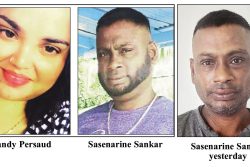Guyana’s foray into bone fide tourism was recently given a boost within a fortnight by two developments – one from abroad and one from home. The first one, “from foreign”, as my Caribbean brethren would term it, came with the international media noting Guyana being included on the National Geographic magazine’s list of “top 21 countries to visit” worldwide. The rating, obviously building for a while, was likely cemented following the recent visit of the National Geographic’s Explorer cruise ship to Guyana, and it was quite an achievement. Handled locally by Wilderness Explorers here, that National Geographic high-end excursion into Guyana, centering around the Essequibo River, created powerful ripples in that very specialized sector of the travel market, and the consequent choice of our country on the magazine’s select list constitutes promotion we could never afford to buy. It not only advertises the content aspect of Guyana’s tourism potential, but does it in a way, and in a vehicle, that also establishes the worth of the product, its uniqueness. It is a development that must be a shot in the arm for the persons, in private business or public push, involved in the tourism sector.
Less publicized outside, the other boost occurred here with a ground-breaking event last week, initiated by the Ministry of Tourism, that offered a night of sightseeing, dining and entertainment on the historic Fort Island in the Essequibo. Held in December, despite the inherent risk of some rain showers,
Against the background of similar events here in the recent past where some disorganization was evident, the staff of the ministry and the Tourism Authority showed that, in the right circumstances, and with the right driver, we can get the work done at the professional level and – and here’s the critical point – at the level international visitors coming here will expect. The kinds of irregularities that Guyanese will put up with, or even laugh off, will anger that visitor “from foreign” and will often result in that person eliminating Guyana from his/her further vacation possibilities.
None of those irritations were in play at this affair where virtually everything needed, except some of the food, had to be brought in ‒ from tents to tables and chairs, to p.a. system, to generator, the works. Ministry staff were on hand to shepherd patrons and to solve problems, and what was striking to an observer was the calm demeanour of everybody involved. If there was any trepidation about the success of this unusual venture, and there must have been some, it never showed. The mood of good time, created on the island, and perhaps aided by the light-hearted entertainment I presented with my three musicians, was maintained on the night time ferryboat ride back to Parika. Other people will report on the event in more detail (some have already done so in social media) but leave it to say that it was a lovely evening, even up to the obliging quarter moon on the boat-trip back to Parika. Some of the karaoke vocalizing, including a burst from Tourism Minister Irfaan Ally, may have been shaky, but the jollity was vivid and contagious.
On another level, however, the event is even more signal for its demonstration of the kind of thinking and approach that needs to be more in play in our tourism sector. Guyana does not have and will never have the standard ‘blue water and white sand’ combination that drives Caribbean tourism, so we have to turn to the other attributes that we have here, the ones they don’t have there, because that is where our tourism pull lies. The idea for this event, apparently propelled by Minister Ally, is an example of that kind of thinking. The Essequibo River, as has been shown by the successful National Geographic trip, and now the night at Fort Island, is one of those tourism resources with the potential to impress visitors. I recall a Canadian lady visitor, at her first sight of the Essequibo from Rodenrust, saying, “Oh my, what lake is this?” Came the reply from Cap DeSilva, “Lake, lady? That’s a river.” Her jaw dropped.
We have many such jaw droppers in our mountains, our waterfalls, our Rupununi Savannah and, as we’ve begun to see in Surama and Rewa, in our wildlife; we have them in our events such as the Lethem Rodeo, Diwali and Mashramani. Once we get the place cleaned up, Georgetown also has tourism potential, in its appearance and in the interesting and varied cultural events that are staged here. In our drive for tourism, we have to find ways to exploit the potentials of those things. Undoubtedly, the size of our country and the considerable travel time involved in reaching some points can be an impediment, but the public and private sector partnerships can be put to work there, to make these attractions come to life. Certainly the problems that will deter travellers (scant airlift; concerns for safety; dirty environment; unkempt accommodations) must be addressed, but this Fort Island event shows that, with that done, we can be strong in the content area in the attractions we have now and in others yet to emerge.
Fort Island has been sitting in the Essequibo River for donkey years. Persons who travel the river have passed it countless times. Now, decades on, someone has seen the tourism potential in it and has demonstrated that potential coming to pass. In its structure, ‘Romancing the Fort’ can be used as a model for how these tourism presentations can be achieved. More importantly, one has to hope that it will trigger other ideas for similar tourism attractions.
This is a vast and multi-faceted country with a powerful and varied culture and an equally varied landscape. The possibilities are waiting for other minds to follow the Fort Island example and find other gems to add to our tourism necklace.






